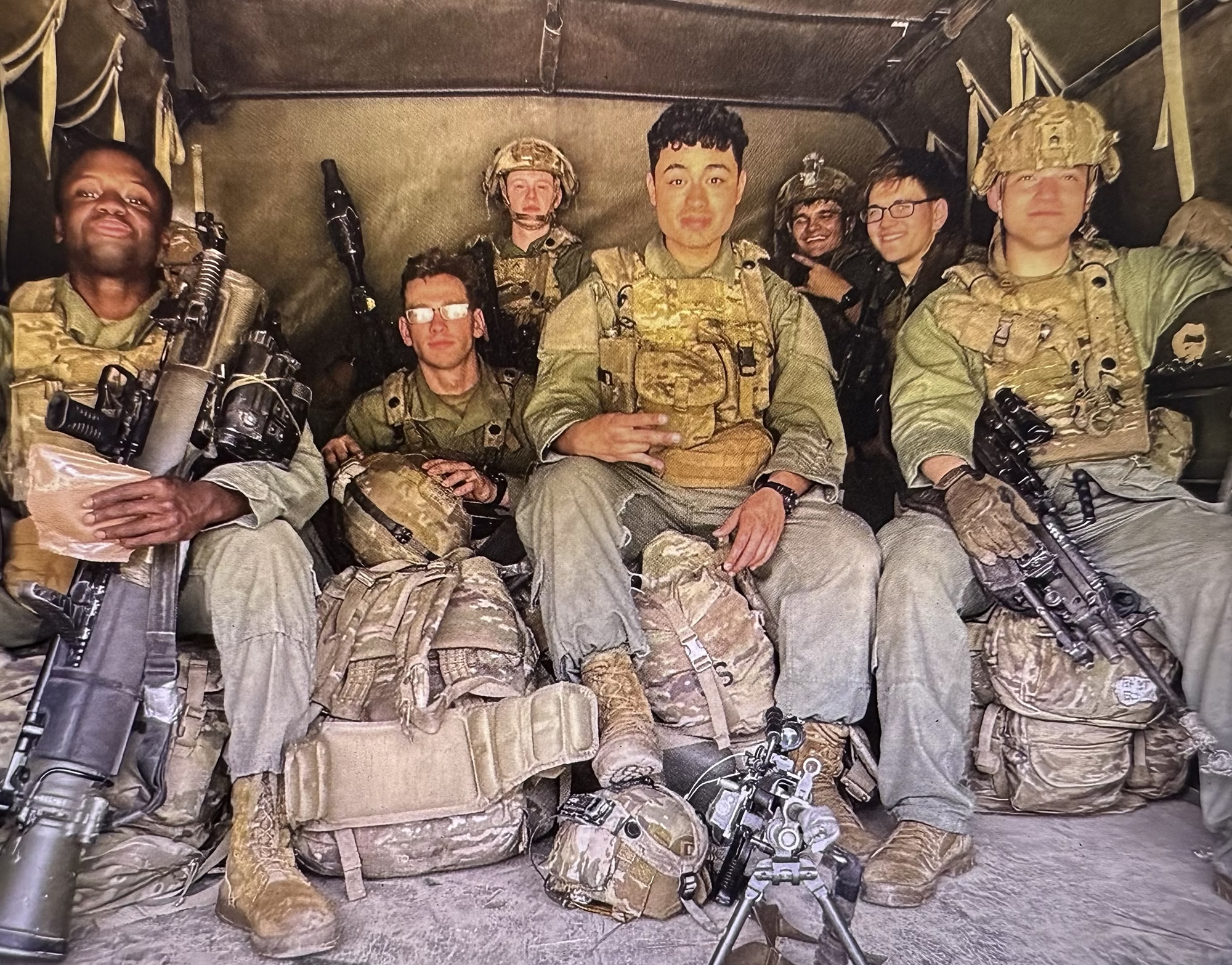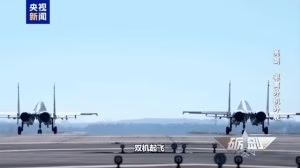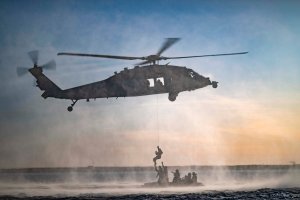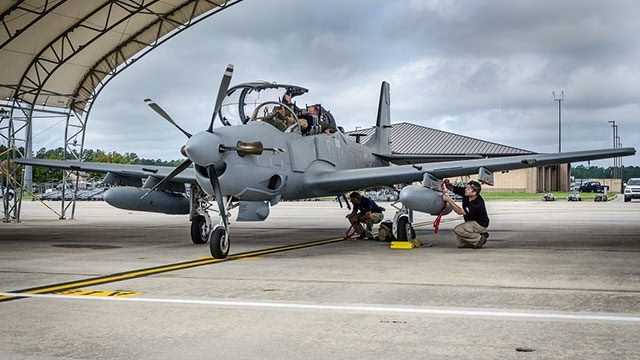Safety procedure lapses ‘directly contributed’ to paratrooper’s death

On Sept. 12, 2024, Army Spc. Matthew Perez made his way to the ramp of a C-17 and prepared to take part in a parachute jump at the Joint Readiness Training Center at Fort Johnson, Louisiana. Perez, who was assigned to the 3rd Brigade Combat Team, 82nd Airborne Division, had told his parents that he was nervous because he was going to be jumping with over 150 pounds of gear, more than he had ever jumped with.
As Perez, 20, pushed unsteadily out of the door of the aircraft, catastrophe struck. An incorrectly tied knot caused his main parachute not to open, according to a subsequent investigation.
Once he jumped from the plane — and investigators believe he may have tripped or fallen as he did so — Perez had just 7.6 seconds to realize the failure and pull his reserve parachute.
The Army’s review of the jump found that Perez opened his reserve parachute roughly 100 feet from the ground but still hit at a high rate of speed, suffering major injuries. Perez was medically evacuated to a hospital, where he was pronounced dead shortly after midnight on Sept. 13.
Perez’s wife Jessica, whom he had married that May, was pregnant at the time of his death. He had also adopted his wife’s daughter.
“He was born at 27 weeks,” Perez’s father Jose told Task & Purpose in 2024. “He was a preemie. It was told to my wife that he was going to have a hard life, and he dealt with hard life, and […] he was strong. Like I said, he was built differently.”
A ‘preventable’ accident
The Army’s investigation into Perez’s death, which was obtained by Task & Purpose, uncovered a serious breakdown in safety procedures and inspections among 82nd Airborne jumpmasters and safety officials leading up to the incident. Investigators also found that the jumpmaster who most likely inspected Perez before the jump was not able to correctly describe to the investigating officer the proper way to check a critical knot in Perez’s equipment that failed and led to his death, and the jumpmaster likely lied about where he was during the events leading up to the jump.
The investigating officer described the T-11 main parachute and its reserve chute as “inherently flawed” because extension lines must be attached to the main parachute for jumps from C-17 aircraft, increasing the risk of someone making a catastrophic mistake during the process. And the reserve parachute does not open automatically if a paratrooper cannot pull the ripcord in time, according to the Army.
“Their operation requires paratroopers to strictly adhere to the policies and procedures for airborne operations,” the investigation says. “In this airborne operation, those policies and procedures were not followed. Consequently, SPC Perez’s death was likely preventable.”
The investigation found a failure between two vital pieces of Perez’s equipment — a long yellow cord known as a “static line” and a five-foot extension added to the line. Perez’s static line, which automatically opens a paratrooper’s parachute, required an extension for the jump. But somewhere in the pre-jump process, the two lines on Perez’s parachute were “most likely” improperly connected, and that flaw was not spotted. Once the connection between them failed, there was no hope that his main parachute could deploy.
Perez’s family remains unsatisfied by the Army’s explanation for their son’s death. In the wake of the fatal jump, a company commander was fired and a handful of riggers and jumpmasters on duty during the training exercise were punished.
Jose Perez said he does not believe the Army has gone far enough.
“As a parent, it’s never going to be enough,” Jose Perez told Task & Purpose. “He don’t get to hold his baby. He don’t get to see us, talk to us. All of that is taken away.”
A parachute rigged to fail
Investigators traced the direct cause of Perez’s death to an improperly tied knot that should have connected a 5-foot extension to his static line, which are required for all jumps from C-17s.
When five-foot Universal Static Line Extensions are used, Army parachute rigging regulations mandate they be secured to the main static line using a girth hitch, a simple, time-tested loop-and-pull knot with countless uses in the military and beyond.
But at some point prior to Perez’s jump, the extension was added to his parachute with an improperly tied knot, according to the investigation. Investigators said they could not determine exactly who was responsible for the fatal error or when it occurred and that no record was made of the addition in the parachute’s Form 3912, a small logbook that stays with each parachute through its service life.

“The improper packing, rigging, modification, inspecting, or some combination thereof, of SPC Perez’s T-11 M [parachute] directly contributed to his death,” the investigation found.
The investigating officer said he could not definitively determine when Perez’s static line was adjusted, whether early in the evening or at the airfield just before the flight, said Army Col. Mary Ricks, a spokesperson for the 18th Airborne Corps.
“This is because there is no direct evidence that SPC Perez’s 5’ [Universal Static Line Extension] was replaced,” Ricks said in a statement to Task & Purpose. “The [investigating officer] found the most likely cause for the improper girth hitch, however, is that it was adjusted at the [departure airfield].”
Fatal jumps are relatively rare in the unit. Perez is the only 82nd Airborne Division paratrooper to die during an airborne operation within the past two years, Ricks said.
‘Grave’ jumpmaster issues
If Perez’s line was switched before he donned the parachute, then the mistake would have had to be missed by at least one jumpmaster during a Jumpmaster Personnel Inspection, or JMPI, before he moved out to the flightline to board the C-17.
Investigators spoke to all of the jumpmasters on duty for the jump, but none of the soldiers said they had conducted Perez’s JMPI, according to the investigation. Given those blanket denials, investigators said they could not rule out the possibility that Perez did not receive an inspection prior to the jump, but the investigating officer determined that “it is more likely than not” that Perez was inspected.
If so, investigators wrote, at least one jumpmaster “lied to me about his whereabouts during the critical period.”
The soldier who officials suspected of lying about Perez’s JMPI — whose identity, like all witnesses in the investigation, was redacted — was “admonished” by the division commander, Ricks said.
When quizzed on their general knowledge of parachute inspections, four of the jumpmasters inspected the 5-foot extension line “in a different time or manner” than required by standard procedures, the investigation found. None of the jumpmasters said they had failed to inspect the line, according to the investigation.
One jumpmaster was unable to properly describe the correct way to inspect a girth hitch. Ricks confirmed to Task & Purpose that this jumpmaster is the one who most likely inspected Perez prior to the jump.
“This investigation revealed confusion among jumpmasters about the proper manner to inspect a 5-ft [extension],” the investigation says. “This likely had grave safety implications for the overall [Joint Forcible Entry — Airborne] operation.”
Problems in the rigger shop
After Perez’s death, the investigative team looked at several parachutes that had been packed by soldiers with D Company, 189th Division Sustainment Battalion, which packs parachutes for the entire 82nd Airborne Division. That review uncovered an “unacceptable rate” of problems ranging from minor to “potentially catastrophic.”
“Based on our recent audit, these deficiencies are systematic and endanger the paratroopers of [the 82nd] Airborne Division if uncorrected,” the investigation says.
Riggers with the unit, the report found, may have removed and replaced the 5-foot extension lines for some of the paratroopers as they waited to load the C-17 at the airfield.
Investigators found that soldiers were unclear on the rules governing parachute preparation. Several of the soldiers did not know who was allowed to make changes to the 5-foot extension line, where in the preparation process such a change could occur, or what the unit’s standard operating procedure is for rigger checks at the airfield.
Two soldiers, whose names were redacted, recalled previous incidents during which 5-foot extension lines were changed at the departure airfield prior to a jump. Another thought the line could be changed at the airfield if an air delivery officer gave permission to do so.
The investigation determined that by replacing the 5-foot extension at the airfield, the riggers had violated their unit’s standard operating procedure.
But in response to a question from Task & Purpose on those procedures, Rice said that the company’s standard operating procedures at the time did allow certified riggers to replace the extension lines at the airfield, and that that replacement is allowed under the Army’s technical manual for the T-11 parachute.
The night Perez died, one soldier told investigators, a member of the rigger check team was emotional after the accident.
“I spoke with her and she asked me ‘what’s going to happen to the person that packed it?’” the soldier recounted. “And I just told her that I don’t know. At any rate, she seemed very emotional and concerned. Last week, I was talking with [REDACTED] and he told me she asked, ‘so wait, only riggers are supposed to change out static lines — not [jumpmasters]?’ That concerned me, given this incident. It made me think there was something she knew or saw while on rigger checks at JRTC that she wasn’t saying.”

Riggers in D Company told investigators that a lack of incentives available to soldiers in the unit can “lead to burnout and low quality,” and that riggers who are out of the office for extended periods “could use a refresher” when they return.
An Airdrop Systems Technician warrant officer — an advisor to senior leadership about airborne operations — told investigators that when soldiers at the rigger check facility are caught cutting corners, they are retrained. However, some leaders showed a reluctance to decertify soldiers because they might file a complaint with the Army’s Inspector General’s Office or Equal Employment Opportunity program.
Ricks said that prior to Perez’s death, certified parachute riggers were allowed to replace extension lines “for any technical or materiel concerns” for C-17 jumps. But 82nd Airborne officials now restrict such changes.
“As a result of this tragic training fatality, however, the [82nd] Airborne Division now limits this practice within the unit,” Ricks said. “The Division’s policy now requires replacement of the entire parachute and the first General Officer in the chain of command must approve any exception.”
‘Leadership failures from start to finish’
Retired Army Lt. Col. Francesca Graham, a former jumpmaster, told Task & Purpose that replacing the extension line at the airfield was “a very extraordinary thing to happen,” adding that if she were in a similar situation, she would have opted to replace the entire parachute instead of just the extension line.
When paratroopers are at the departure airfield, they are rushing to get onto their aircraft, Graham said. That means anyone who makes changes to parachutes under such time pressure is more likely to make an error than the riggers and packers preparing parachutes much further in advance, she said.
“It’s kind of one of those things where it’s like, how much risk are you willing to take?” Graham said. “Like for me, there were numerous times when a reserve parachute had an issue with it, and so as the jumpmaster doing the inspection, I was like: ‘Go get a new reserve.’”

Graham was also struck that none of the jumpmasters interviewed for the investigation was able to say conclusively who — if anyone — had inspected Perez. If Perez did go through a JMPI prior to the jump, then the jumpmaster “didn’t see a major defect,” she added.
“At the point that someone dies or there’s an incident, people’s memories get real sharp, real quick,” Graham said. “One of those jumpmasters should have been able to say: ‘Yes, I inspected this jumper.’”
“There appeared to be leadership failures from start to finish at the jump,” Graham said.
One commander fired and other soldiers punished
Following Perez’s death, a company commander was fired “for the systemic failures of oversight with parachute rigging activities and quality control,” and is currently assigned to the 82nd Airborne Division’s staff, Ricks said. Nine other officers, warrant officers, and noncommissioned officers were reprimanded, she said.
Eight jumpmasters and five riggers were decertified after the fatal jump, Ricks said. Being decertified means that jumpmasters can no longer perform their duties and have to undergo retraining, including the proper way to inspect the 5-foot inspection line.
All the soldiers who were decertified due to Perez’s death have since been recertified after going through the refresher training and resumed their duties, Ricks said.
The 82nd Airborne Division has made a number of changes to make sure that the failures leading up to Perez’s death do not happen again, including sending the decertified jumpmaster to a refresher course and retraining the riggers, Ricks said.
The Army Criminal Investigation Division, or CID, also investigated Perez’s death, but closed its investigation after finding “no probable cause […] to support any allegations of criminal misconduct,” Ricks said.
Jose Perez said leaders in his son’s unit had told him and his wife that five — not eight — jumpmasters had been decertified. Ricks was unable to explain the disparity.
Both of Perez’s parents said they are not satisfied with the information they have been provided about their son’s death.
Perez’s mother Vanessa said that she is frustrated by the redactions in the copy of the 240-page investigation that she and her husband were provided.
“There’s full sentences, full paragraphs that we’re not able to read, and we wonder why,” she said. “At times, I’m going to be honest with you, I feel like they’re hiding something.”
‘No one should die’
Perez, who carried a squad automatic weapon, weighed 340 pounds at the time of the jump, including his body weight and all his gear, the investigation found.
“He stressed it out to us how scared he was because of so much weight he had,” Vanessa Perez said. “He expressed it to myself, my husband, his wife as well.”
But Ricks said it was not unusual for a machine gunner Perez’s size to be carrying so much weight during a parachute jump.
“The T-11 Main and T-11 Reserve parachutes weigh a combined 53 pounds,” Ricks said. “SPC Perez’s combat equipment — which included his ruck, weapons case, and weapon — weighed 104 pounds. [Three hundred and forty] pounds combined pounds is within the acceptable range for jumping combat equipment, and the T-11 Main canopy is authorized and rated to be jumped at a total rigged weight of 400 lbs.”
The exercise marked Perez’s ninth jump and fourth in full equipment and at night.
The investigation also determined that Perez’s exit from the C-17 was “weak,” possibly due to “paratrooper fatigue and the weight of his combat equipment.” He likely tumbled through the air as a result. The report also faulted Perez for not keeping his hand over the ripcord for his reserve parachute when he left the aircraft and for waiting too long to pull his reserve.
But Graham said it was “ludicrous” to blame Perez for not exiting the aircraft correctly, explaining that rather than jumping up and out as paratroopers are supposed to, he likely fell forward because of how much weight he was carrying.
“He’s now tumbling in the air, which means that the static line is wrapping around him, and he has no idea what’s going on,” Graham said. “You’re disoriented completely, and you probably have things wrapped around you as you fall forward.”
“It’s a lot,” Graham said.
Jose Perez called the investigation’s finding that his son waited too long to open his reserve parachute “bullshit.”
“It’s a training exercise — everyone should be coming home,” Jose Perez said. “No one should die. Protocol should be: Everyone should come home.”
The latest on Task & Purpose
- The Air Force fitness test may soon include 2-mile runs twice a year
- ‘War Thunder’ continues to live up to its reputation for OPSEC violations
- Guardsmen sent to LA are 130 miles east of the city doing drug busts
- Lightning Carriers: The Marines’ secret weapon in the Pacific
- Pentagon releases details of ‘Midnight Hammer’ strikes against Iran















